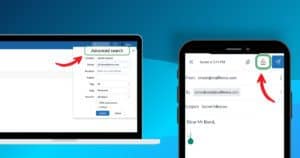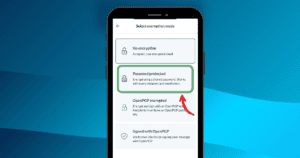A virtual machine is another practical method to improve your security and privacy by protecting your device (computer, server) from many cyber threats, preventing it from getting compromised. But don’t worry! While it sounds very technical, it’s actually quite simple, and we made our tips straightforward and accessible.
What’s a virtual machine?
A virtual machine (VM) emulates a computer environment that behaves like an independent computer. It has its own memory, operating system, network bandwidth, and CPU power. It’s a substitute for a traditional computer and allows you to work with different software, provided they run on the same operating system.
Virtual machines are often used to share the computing resources of a server or a cloud between several users or to reproduce the environment necessary for the functioning of old software you want to use. But they can also protect a real environment (a computer and its contents) from possible infection by malicious software.
What’s the point of using a virtual machine?
The main purpose of a virtual machine is to run a virtual digital environment within an actual one. It’s like running two separate computers in one. This can be useful in many circumstances:
1 – Isolation from the host operating system
In any digital environment, the biggest risk comes from human errors. We are prone to make mistakes. For instance, we sometimes click on a suspicious link in a phishing email, or open an attachment or documents infected by malware such as ransomware, thus triggering the downloading of this malware on our computer, tablet, or smartphone.
A virtual machine will contain the damage made by this malware to itself. The host system will stay unaffected.
2 – Quick recovery after a cyberattack
Sometimes you might have a strong suspicion that a file is malicious. But you have to open this file for professional reasons. VM applications allow you to take a “snapshot” (a kind of copy) of the state of programs and the current configuration of the VM. Suppose the suspicious file/service actually causes an unrecoverable issue on the VM. In that case, you can easily revert to a previous snapshot of the VM, when it was not infected by the malware. And do you know the best about it? It only takes a few minutes to operate this recovery.
3 – Portable appliance
Once you installed a guest operating system in a VM and completed all the applications and configurations, the VM can be saved as an ‘appliance’. This appliance can be restored later to be used again by yourself, or another person. You can also easily copy and use it on another computer. For example, a user sets up a complex configuration in a virtual machine allowing them to perform particular tasks. After having done this, they will save it as a virtual appliance which can be plugged and used from a different device.
4 – Helps in avoiding Big Tech’s tracking and profiling
Most of the services offered by Big Tech we use online continuously track and profile us. This is due to the fingerprinting and other types of techniques which uniquely identifies our device (and by the way, if you are sick of this constant tracking and profiling, you can follow our guide to Degoogle your life). A virtual machine helps in protecting you from this by getting your VM identified instead of the host operating system, provided that you only use VM for specific tasks (using VM for all of the tasks, work or non-work related, will not help). However, this requires a specific setup of your VM on a network level. For instance, you need to set up the mode: NAT (with no port forwarding), to avoid any leakage of host operating system attributes such as your hostname or your IP address.
5 – Switch easily to software running on different OSs
As we have already seen, VM applications allow you to take “snapshots”, meaning to save programs state and specific configuration. They are also handy for using another operating system than the one run by your computer. Say, for instance, your computer runs on Windows, but you need to use software only available on Unix like OS. You can create a VM running Unix like OS to use your software, then save this VM in its current state before shutting it down to revert to your actual computer. This way, you can switch to another task on your Windows software (or even on another VM, created for your macOS software, if you wish), and revert later to the Unix OS VM in its previous state. Why purchase three different computers when you can have all OSs in just one of them?
How to install a virtual machine?
To install a virtual machine, we recommend using a hypervisor (also called virtual machine manager – VMM). It’s a software intended to “partition” the resources of a computer, a server, or another host machine on which you want to install a virtual machine. The hypervisor optimizes the use of the resources of this host device.
Which Virtual Machine Application should you use?
Many famous software editors propose their own virtual machine applications, but most of them are proprietary products. That’s why we prefer free-of-charge open-source software :
- VirtualBox, fit for Windows, GNU/Linux, MacOS OSs;
- KVM for GNU/Linux;
- Xen for GNU/Linux.
They all have the performance and functionality most users will look for. Moreover, they will safeguard your host computer’s stability.
Technically, virtual machines essentially help you create a sandbox (a highly isolated and restrictive space). You can use the online service FilePreviews.io’s Sandboxing feature, which allows you to open up a file or link on their own website, without any risk of infection. However, this will not be enough to ensure full coverage in many scenarios. Running a private virtual machine will protect you even better.
You’re not ready yet to use a Virtual Machine ? Learn more about how you can protect your computer.
Conclusion
Virtual machines are a brilliant way to secure your digital activity and protect your privacy. But there are other tools to improve your data security: encryption, digital signatures, private and public keys etc. You may not have heard of them, but this shouldn’t stop you from taking advantage of the huge benefits they can bring you – especially if you’re a company, a journalist, a dissident or any professional or individual concerned with privacy and security.
That’s why we have created our comprehensive Email security and privacy awareness course, avoiding complicated concepts and jargon to. Check now and take your cybersecurity awareness to the next level!
You can also start your journey with email privacy by opening a free account of our private and secure Mailfence email suite to raise your protection against intrusiveness and cyber threats. You’ll enjoy a calendar with polls and groups management, a chat service, and a document storage and management tool, all secured.




